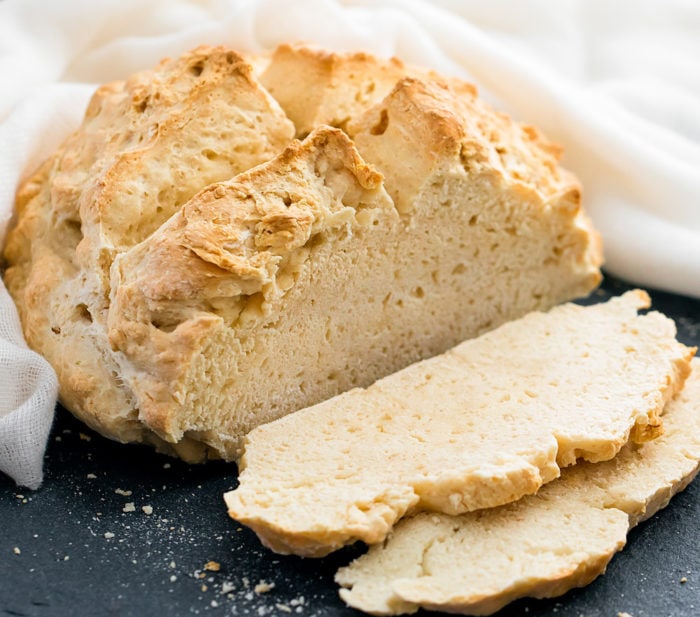

- How to make baking powder or yeast from scratch plus#
- How to make baking powder or yeast from scratch free#
Can you make bread without yeast and without baking powder? So if a recipe calls for 1 teaspoon of yeast, you can use half a teaspoon of lemon juice and half a teaspoon of baking soda. You can substitute yeast with equal parts lemon juice and baking soda. Knead dough for 10 minutes and let rest for 20 minutes. Slowly mix water, a few tablespoons at a time, into flour mixture until dough is smooth and easy to handle. How do you make dough with flour and water?
Roll dough into a 12-inch circle on a baking sheet. Cover dough with an inverted bowl and let sit for 10 minutes. Turn dough onto a lightly floured surface and knead 10 times. Mix flour, baking powder, and salt together in a bowl stir in milk and olive oil until a soft dough forms. How do you make pizza dough from scratch without yeast? You can use lemon juice, buttermilk, or milk combined with an equal part of vinegar as your acid. If you want to successfully substitute the yeast called for in a recipe, you just need to swap in the right amount of baking soda and acid to make the dough rise. How can you make dough rise without yeast or baking powder? Once the dough starts to come together add the olive oil (photos 1-4). Add the warm water and mix together with a spoon. Put the flour and salt in a large bowl and make a small well in the middle. How to make baking powder or yeast from scratch free#
There are only four simple ingredients needed to make this yeast free pizza dough, flour, warm water, olive oil and salt. What happens when you mix water and flour?.
/yeast-substitute-for-baking-4140439-v5-ed29f267f85e4e3292ac1f2bfb2869ca.png) How do you make Jamie Oliver pizza without yeast?. Can you make bread without yeast and without baking powder?. How do you make dough with flour and water?. What can I use instead of baking powder in pizza dough?. How do you make pizza dough from scratch without yeast?. How can you make dough rise without yeast or baking powder?. Once it is bubbling, active and larger in size, it's ready to use in your bread. Feed it one to three times (the mixture can sit in the same spot for up to a week, just check it to be sure it is clean and without mold) over the course of a week. To feed the starter, repeat the first step by adding the same ratio of flour and water, mix it and, again, allow it to rest. "Feed it," you ask? That's baker talk for giving your starter mixture a little more flour and water - and it's a crucial step to activating your starter for proper bread, as well as keeping your starter fresh in the fridge for future baking sessions. Once you begin to see that the mixture is bubbling, it's time to feed it. Cover the dish with a cloth sealed by rubber bands so bugs or dust can't get in. Mix flour and water until well combined.
How do you make Jamie Oliver pizza without yeast?. Can you make bread without yeast and without baking powder?. How do you make dough with flour and water?. What can I use instead of baking powder in pizza dough?. How do you make pizza dough from scratch without yeast?. How can you make dough rise without yeast or baking powder?. Once it is bubbling, active and larger in size, it's ready to use in your bread. Feed it one to three times (the mixture can sit in the same spot for up to a week, just check it to be sure it is clean and without mold) over the course of a week. To feed the starter, repeat the first step by adding the same ratio of flour and water, mix it and, again, allow it to rest. "Feed it," you ask? That's baker talk for giving your starter mixture a little more flour and water - and it's a crucial step to activating your starter for proper bread, as well as keeping your starter fresh in the fridge for future baking sessions. Once you begin to see that the mixture is bubbling, it's time to feed it. Cover the dish with a cloth sealed by rubber bands so bugs or dust can't get in. Mix flour and water until well combined. How to make baking powder or yeast from scratch plus#
To make enough starter for one loaf, combine 3 tablespoons (1/4 cup) pastry flour, bread flour or all-purpose flour and 3 tablespoons, plus 1 teaspoon of water in a dish that can be easily covered, like a Mason jar or Tupperware container.One loaf of bread requires about 1/3 to 1/2 cup of starter (100 grams is the magic number, if you happen to have a scale).

To make your own bread starter, Suzi Gerber, chef and executive director of Haven Foods, said it only takes a few simple steps to allow flour and water to culture with the natural wild yeasts in the air.



/yeast-substitute-for-baking-4140439-v5-ed29f267f85e4e3292ac1f2bfb2869ca.png)



 0 kommentar(er)
0 kommentar(er)
